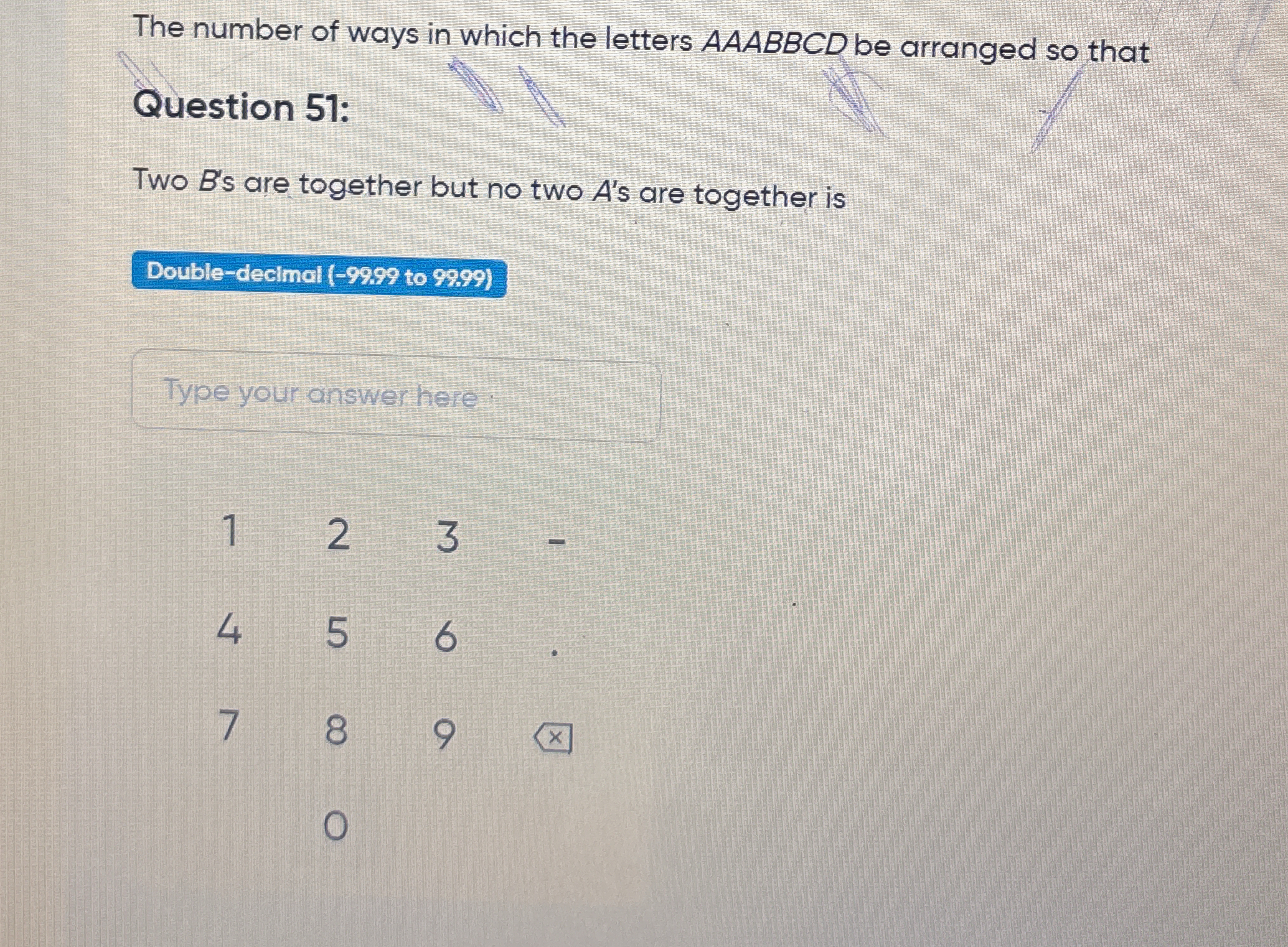The number of ways in which the letters AAABBCD be arranged so that two B's are together but no two A's are together is?

Understand the Problem
The question is asking for the number of arrangements of the letters 'AAABBCD' such that two B's are together while ensuring that no two A's are adjacent. This will involve combinatorial arrangements taking into account the specified conditions.
Answer
The number of arrangements is \( 24 \).
Answer for screen readers
The total number of arrangements is ( 24 ).
Steps to Solve
- Group the Two B's Together
That means we can treat "BB" as a single unit. Thus, the letters we have to arrange are ( AAABCD ) which becomes ( AAABB(CD) ).
- Count the Total Elements to Arrange
Now, we have the groups: ( X = BB, A, A, A, C, D ) (where ( X ) represents the grouped B's). Therefore, we will arrange ( X, A, A, A, C, D ).
This gives us 6 elements: ( 1BB, 3A, 1C, 1D ).
- Calculate Arrangements with No Two A's Together
To ensure no two A's are together, we first arrange the other characters ( (BB, C, D) ). The arrangement of ( BB, C, D ):
The characters are 3 unique positions, so they can be arranged in ( 3! = 6 ) ways.
- Insert A's in Between Other Characters
Once arranged, we create "gaps" around them:
- BB
- C
- D
This creates 4 possible gaps to place the A's: before BB, between BB and C, between C and D, and after D.
- Choose Gaps for A's
We need to select 3 out of these 4 gaps to place the A's. The number of ways we can choose 3 gaps from these 4 gaps is given by:
$$ \binom{4}{3} = 4 $$
- Final Count of Arrangements
Multiply the arrangements of BB, C, D by the ways to place A's:
$$ Total , arrangements = (3!) \cdot \binom{4}{3} = 6 \cdot 4 = 24 $$
The total number of arrangements is ( 24 ).
More Information
This problem illustrates the use of combinatorial techniques to count arrangements under constraints. The grouping of letters and consideration of gaps is a common strategy in such problems.
Tips
- Forgetting to count groups of identical letters properly.
- Miscalculating combinations of gaps available for arrangement.
- Overlooking the restriction of not placing two identical letters next to each other.
AI-generated content may contain errors. Please verify critical information